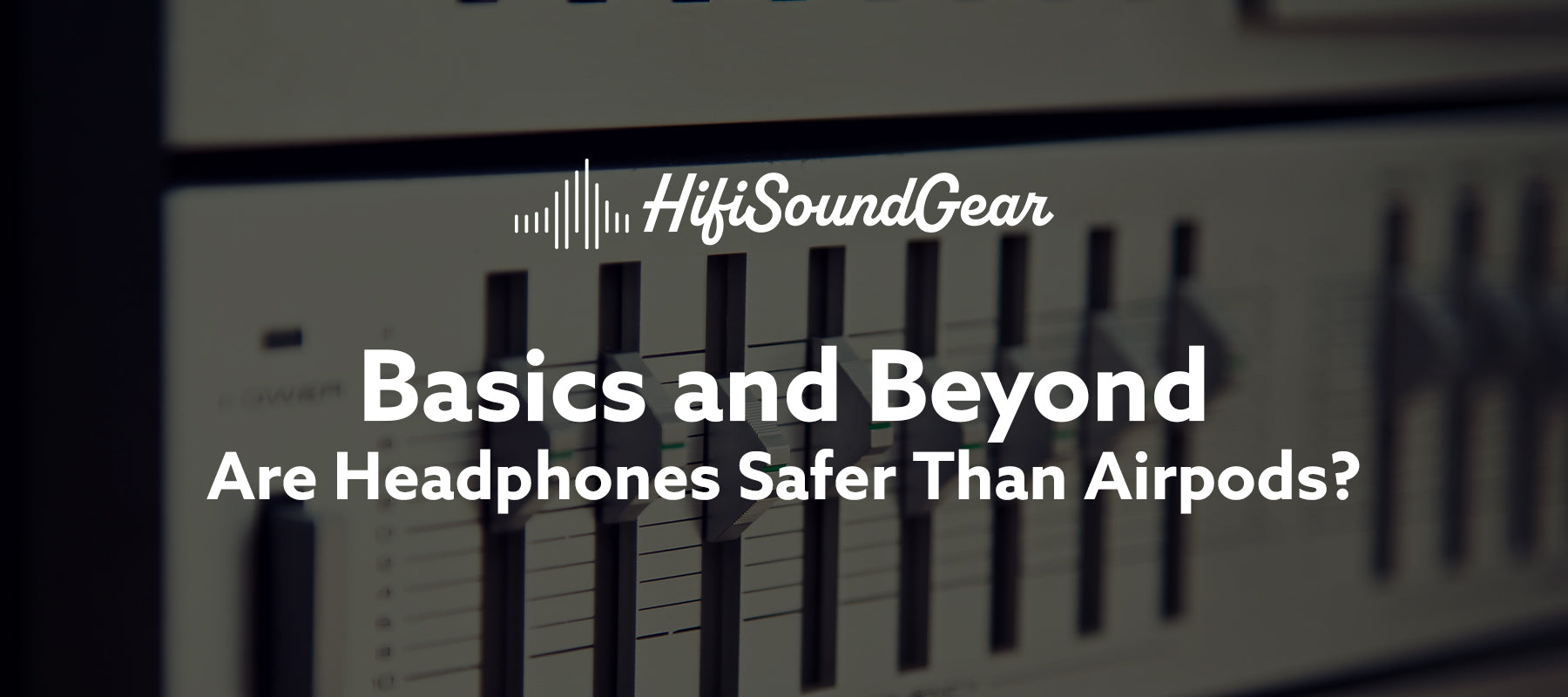
Are Headphones Safer Than Airpods?
Looking for the perfect audio companion but concerned about safety? You're not alone!
In a world where our ears are increasingly becoming prime real estate for technology, the average person spends a whopping 18.4 hours per week plugged into their personal audio devices. That's like binge-listening to "Bohemian Rhapsody" 221 times – though we wouldn't blame you if you did!
Let's tune into the frequency spectrum of facts and filter out the noise about the safety of headphones versus AirPods. Think of this as your audio safety equalizer – we'll boost the important stuff and cut out the interference.
Table of Contents
The Science Behind Wireless Audio: EMF Exposure Explained

When it comes to electromagnetic frequency (EMF) radiation, there's a key distinction between traditional headphones and AirPods that might make your neurons dance.
Wired headphones typically emit negligible EMF levels, while AirPods use Bluetooth technology that operates at around 2.4 GHz. But before you unplug your wireless earbuds in panic, here's the crescendo of calm: Bluetooth devices operate at SAR (Specific Absorption Rate) values well below international safety standards.
Think of it this way: if EMF radiation were a concert, your AirPods would be playing at acoustic guitar levels while your microwave is going full heavy metal. Studies have shown that Bluetooth radiation is approximately 10-400 times lower than cell phone radiation levels.
Acoustic Safety: Decibel Delivery and Sound Pressure Levels

Here's where traditional headphones might take the Grammy for safety.
Over-ear headphones typically provide better acoustic isolation, which means you're less likely to crank up the volume to overcome environmental noise. It's like having your own personal recording studio around your ears.
AirPods can reach the same potentially dangerous volume levels (up to 120 dB), but their in-ear design might tempt users to increase volume more frequently. The key difference? Over-ear headphones create a physical barrier that blocks about 8-12 dB more ambient noise than typical AirPods.
Physical Design and Ergonomic Considerations
Let's talk about the architectural acoustics of your ear canal.
Traditional headphones distribute pressure over a larger area, similar to how a snowshoe prevents you from sinking into snow. AirPods, meanwhile, focus their pressure on specific points within your ear canal.
Both designs have their own hygiene considerations:
- Over-ear headphones can create a warm, potentially sweaty environment
- AirPods might increase the risk of ear canal infections due to their deep placement
Battery Safety and Chemical Exposure

Here's an often-overlooked safety solo: battery proximity.
AirPods place lithium-ion batteries directly in your ear canal, while traditional headphones usually keep power sources further from sensitive areas. However, both devices undergo rigorous safety testing, and the risk of battery-related incidents is extremely low – you're more likely to see Nickelback win Album of the Year!
Advanced Safety Features and Technology Comparison
Modern audio devices are like having a tiny sound engineer watching out for your ears. Both headphones and AirPods often include:
- Automatic volume limiting
- Sound level monitoring
- Hearing health tracking
However, AirPods generally offer more advanced features like:
- Transparency mode for environmental awareness
- Real-time audio level monitoring
- Adaptive EQ to prevent harmful frequency buildups
The Verdict: Your Personal Audio Safety Mix
So, are headphones safer than AirPods? Like any good mix, it's all about balance. Traditional headphones generally edge out in terms of pure EMF and acoustic safety, but AirPods counter with advanced safety features and convenience.
Here's your safety sound check:
- For minimal EMF exposure: Choose wired headphones
- For best acoustic isolation: Over-ear headphones win
- For advanced safety features: Modern AirPods take the lead
- For long-term comfort: Over-ear headphones usually prevail
Remember, the safest audio device is the one used responsibly. Keep volumes below 85 dB (about 60% of maximum volume), take regular listening breaks, and clean your devices properly. Think of your ears as irreplaceable vintage microphones – they deserve premium care and attention!
Elevate Your Listening Experience With These Related Articles
Enjoyed this article? Feel free to check out these related topics!

